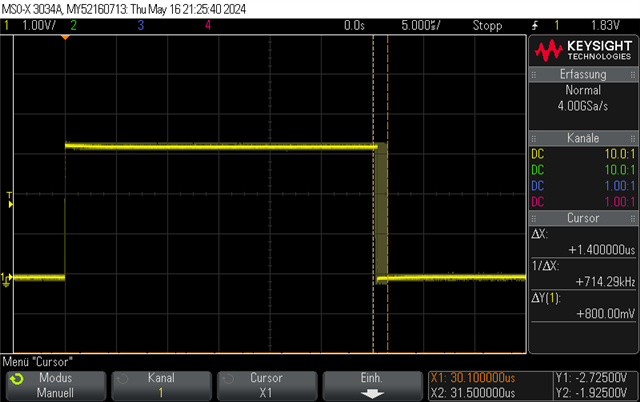Hi
I tried to route the LFCLK (32kHz LFXO) on a GPIO similar to the method that has been described here:
How to output 32768Hz external crystal LFCLK at a GPIO pin?
When I run the code on the nRF52832 everything works fine, i.e. I get the proper 16384 Hz signal without jitter.
But when I run the same code on the nRF52833, I get a signal that jitters with ~1.4us which leads to a frequency between 15873 and 16612 Hz.

- In both cases, the external LFXO is running.
- It doesn't matter if the SoftDevice is running.
- It seems that the issue only occurs when the application toggles additionally other GPIO(s).
Do you have an explanation for this behavior? Why does it only occur on the nRF52833?
Many thanks in advance.
Best regards, Remo


